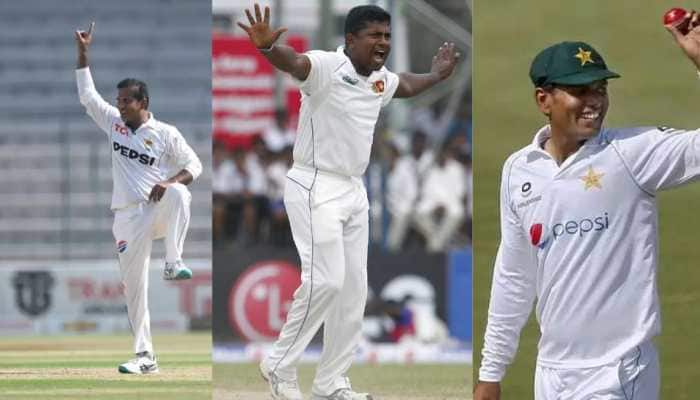57 dot balls should teach Bangladesh an important lesson
Bangladesh batters, from the outset, began with an aggressive mindset, throwing their bats to everything that was hurled at them. The urge to provide a quick start overpowered their ability to think wisely.
Trending Photos
) Photo: IANS
Photo: IANS New Delhi: Twenty20 cricket as it seems doesn't really need to be over-rushed. There are endless examples that tell you that even proper cricket can help in surmounting mammoth totals inside 120 balls. But if the approach is faulty, meaning if a team swings blindly against bowlers to get to a competitive total and actually end up wasting a lot of balls, the usual outcome is an under-par total. Just ask Bangladesh what they were up to against India on Thursday evening in Colombo and they would admit that their approach to setting a daunting total was hurt by a lack of a well-laid plan.
Bangladesh batters, from the outset, began with an aggressive mindset, throwing their bats to everything that was hurled at them. The urge to provide a quick start overpowered their ability to think wisely. In all, they batted against 122 balls and wasted 57 balls – dot balls – to end up at an under-par 139. Forty-six per cent of the deliveries they faced didn't fetch them a run. More than the wickets, it's the dot balls that usually hurt a team.
India, on the other hand, had 39 balls out of 112 off which they did not score. That's just 34 percent. Just think for a moment that had Bangladesh scored even singles off half of that number, they could have easily reached 170, which on this kind of track could have been a match-winning total. While they ran 43 singles, India during their chase had 54 in their account, showing that despite having faced a few good deliveries and two quiet overs, the continuous rotation of strike made things easier for them.
“It's obvious that we didn't bat well. We should've scored a lot more runs, probably 30 more runs. They executed their plans very well but we should have found ways to make more runs. We need to rotate the strike more often. The dot balls created a lot of pressure. I think we are just one win away from getting a boost. We're still searching for it and I think we'll get it,” said skipper Mahmudullah.
As far as Bangladesh were concerned, they looked interested in only scoring boundaries. At the end of 10 overs they were 69/3 and all three wickets they lost were a result of unnecessary strokes. The consequence was that little mistakes kept troubling and they couldn't get into the groove. If they got one good over, they would end up losing a wicket or two. Bangladesh scored less than six an over nine times out of 20 overs. While India had four such overs.
If you take a look at their scoring graph, Bangladesh lost the plot during overs 10-14 as their run-rate took a plunge below seven an over but slightly over six. That was the time when Yuzvendra Chahal, Washington Sundar and Vijay Shankar bowled 3-run overs each. Against Chahal, either Bangladesh went for a hoick or they defended, to Sundar it was more of making room and trying their luck and similarly against Shankar, the batters kept backing away. In this entire scenario, all the balls they missed, those could have been easily yielded at least singles.
India made that sure against offie Mehedi Hasan. He bowled really well but they kept nudging him for singles to collect five or four in his overs. While during the latter part of Bangladesh's batting, they did manage a couple of good overs, including 13 runs off Unadkat in the penultimate over, the mistakes made in the first half of the innings cost them dear.
Stay informed on all the latest news, real-time breaking news updates, and follow all the important headlines in india news and world News on Zee News.
Live Tv







)
)
)
)
)
)
)
)
)
)
